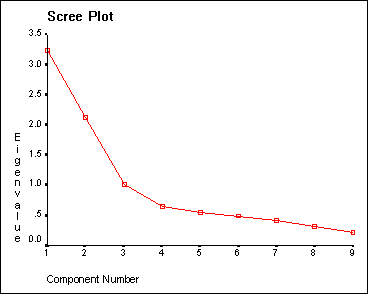EPP Structure
The structure of the Eysenck Personality Profiler
This is a shortened paper from one that appeared in the British Journal of Psychology, 2000, 91, 223-239.
Copyright - no duplication permitted
Chris J. Jackson ‡
Adrian Furnham+
Liam Forde*
Tim Cotter*
‡ Department of Psychology
University of Surrey
+Department of Psychology
University College London
*Management Technology Systems
Auckland
Introduction
This study examines the structure and validity of the Eysenck Personality Profiler (EPP). This measure is one of a long line developed by Eysenck: The Maudsley Personality Questionnaire (MPI); the Eysenck Personality Inventory (EPI); the Eysenck Personality Questionnaire (EPQ) and the revised version of the latter (EPQ-R). Each of these measures assess the primary personality traits at the super-factor level - either two (Extraversion and Neuroticism) for the MPI and EPI or three (Extraversion, Neuroticism and Psychoticism) for the EPQ and EPQ-R. The EPP, on the other hand attempts to measure traits at both the primary factor and the super-factor level. It is the only Eysenckian-based instrument which measures traits at the primary factor level, thus yielding 3 superfactor and 21 primary factor scores, as well as a measure of the lie scale, time taken to complete the questionnaire and the total number of Can’t decide responses. Scale names, scale definitions and example items are shown in Table 1.
Table 1
Definitions of the primary scales of the Eysenck Personality Profiler
|
Superfactor
|
Primary scale
|
Description
High scorers are:
|
Example item from each scale
|
|
Extraversion
|
E1: Activity
|
generally active, energetic, starters of work and proactive.
|
If you think you may have to wait a few minutes for a lift, are you inclined to take the stairs instead?
|
|
|
E2: Sociability
|
inclined to seek out the company of other people and are generally happy and comfortable in social situations.
|
Is it important to you to be liked by a wide range of people?
|
|
E3:Assertiveness
|
independent, dominant, and stand up for their rights, perhaps to the extent of being viewed as ‘pushy’.
|
Do you find it difficult to get rid of a salesperson who is persistent and wasting your time?
|
|
E4: Expressiveness
|
open with their feelings, volatile and demonstrative.
|
When you are angry with someone do you wait until you have calmed down before tackling them about the incident?
|
|
E5:Ambition
|
ambitious, hard-working, competitive, keen to improve their social standing and place a high value on productivity
|
Do you have a strong desire for self-improvement?
|
|
E6: Dogmatic
|
uncompromising in their views on most matters and they are likely to defend them vigorously and vociferously.
|
Would you prefer to fight for your beliefs than let an important issue go unchallenged?
|
|
E7: Aggression
|
given to the direct or indirect expression of aggression through temper tantrums, fighting, violent argument and sarcasm.
|
Are you considered an even-tempered person?
|
|
Neuroticism
|
N1: Inferiority
|
low in self-esteem have a low opinion of themselves and believe themselves to be failures
|
Do you sometimes feel that you can never do anything right?
|
|
|
N2: Unhappiness
|
characteristically pessimistic, gloomy and depressed, disappointed with their existence and at odds with the world.
|
Do you feel that you often get a raw deal out of life?
|
|
N3: Anxiety
|
easily upset by things that go wrong and are inclined to worry unnecessarily about unpleasant things that may or may not happen
|
Is life often a strain for you?
|
|
N4: Dependence
|
lacking in self-reliance, think of themselves as helpless pawns of fate, are pushed around by other people and events and show a high degree of what has been called ‘authoritarian submission’- the unquestioning obedience to institutional power.
|
Do you often have the feeling that other people are using you?
|
|
N5: Hypochondria
|
likely to acquire psychosomatic symptoms and imagine that they are ill.
|
Do you worry a lot about catching disease?
|
|
N6: Guilt
|
self-blaming, self-abasing and troubled by their conscience regardless of whether or not their behaviour is really morally reprehensible.
|
Do you often feel a strong need to confess something that you have done?
|
|
N7: Obsessiveness
|
careful, conscientious, highly disciplined, staid, finicky and easily irritated by things that are unclean, untidy or out of place.
|
Is it very important to you that everything should always be neat and tidy?
|
|
Psychoticism
|
P1: Risk-taking
|
reward seeking and like to live dangerously with little concern for the possible adverse consequences
|
When you are catching a train, do you often arrive at the last minute?
|
|
|
P2: Impulsiveness
|
inclined to act on the spur of the moment, make hurried, often premature decisions and are usually carefree, changeable and unpredictable.
|
Do you like planning things well ahead of time?
|
|
P3: Irresponsibility
|
inclined to be overly casual, thoughtless, careless of protocol, unpredictable and socially unreliable
|
Do you often forget little things that you are supposed to do
|
|
P4: Manipulativeness
|
detached, calculating, shrewd, worldly, expedient and self-interested in their dealings with other people.
|
Do you think that honesty is always the best policy?
|
|
P5: Sensation seeking
|
forever seeking thrills in life and have an insatiable thirst for novel experiences
|
Do you often long for excitement?
|
|
P6: Tough-mindedness
|
tolerant of and probably enjoy violence obscenity and swearing.
|
Do you like scenes of violence and torture in the movies?
|
|
P7: Practical
|
inclined to be practical, are interested in doing things rather than thinking about them and tend to be impatient with ivory tower theorising.
|
Are you keen about learning things even though they may have no relevance to your everyday life?
|
|
L: Lie scale
|
able to put themselves in a positive light so as to try and create a positive impression.
|
Are you always willing to admit when you have made a mistake?
|
E1 - E3, N1 - N3 and P1 - P3 together with the Lie scale are used in the EPP-S
The study examines the factor structure of the EPP. The measure has a manual (Eysenck & Wilson, 1991; 1999), evaluative studies (Eysenck, Barrett, Wilson & Jackson, 1992; Costa & McCrae, 1995) and has been used in various studies (e.g. Furnham, Forde & Cotter, 1998ab; Jackson & Wilson, 1994; Wilson & Jackson, 1994).
Recently Eysenck, Wilson & Jackson (1996, 1999) released a shorter version of the Eysenck Personality Profiler. Eysenck, Wilson & Jackson (1997) explain their choice of the nine scales from the original twenty-one: "The present shortened version of the EPP was produced because the original version was found too lengthy for some situations where a quicker turnaround was preferred. Also the large number of traits, while advantageous where detailed and expert consideration was possible, imposed a great load on the person analysing the data, and it was felt that a shorter inventory, containing just 3 scales for each major variable, plus a Lie scale, would give sufficient information for most purposes, particularly if the traits selected were felt to be particularly important for research and applied purposes." (p.9).
The aims of the paper were two fold. First, to provide a replication of the work of Costa & McCrae (1985) using a three times larger sample of data. We attempt a higher order classification of the EPP traits by determining whether a three or five factor solution provides the best description to the 21 primary Eysenckian traits of the EPP and the 9 Eysenckian traits of the EPP-S. We predict that the EPP will be no different from almost all personality questionnaires in that the five factor model will provide the best description of the variance in the dataset. Second, we use confirmatory factor analysis to determine the goodness of fit of prior specified three and five factor solutions with the aim of determining if one solution is better than the other. In line with Costa & McCrae (1985), we predict that the five factor solution will be superior.
Method
Participants
In all, 655 people took part in this study. 54% of the sample were female and the mean age was 32 years (SD= 7.6). Nearly all were native English speaking New Zealanders of European origin. All were employees, or potential employees, of a large communication organization. Most were middle class people who had completed the equivalent of the final school exams (A levels, 12th Grade) and who had been employed for over a decade in a variety of technical and specialist occupations.
Questionnaire
The Eysenck Personality Profiler (EPP; Eysenck & Wilson, 1991) is a 420 item questionnaire measuring 21 primary and 3 super traits. Each item is responded to on a ‘yes’, ‘no’ or ‘can't decide’ scale. The questionnaire is administered by personal computer. In addition to the above scales, there is a dissimulation subscore (similar to the lie-scale on the EPQ), as well as records of how long (in seconds) the subject spends completing the entire test (response latency) and the total number of ‘can't decide’ scores. The EPP has been subjected to various forms of psychometric assessment (Eysenck, Barrett, Wilson & Jackson, 1992; Costa & McCrae, 1995) and studies of specific groups (Jackson & Corr, 1998; Jackson, Furnham & Lawty-Jones, 1999; Jackson & Wilson, 1993; Wilson & Jackson, 1994).
Procedure
Participants were tested as part of a selection and development program in their organization. Over 90% approached completed the task. All were debriefed about their personal results. Since the EPP was administered by computer, each participant was presented with a standard set of instructions to complete the questionnaire. There was no evidence that the subjects set out to create a positive image and recent meta-analysis evidence suggests that the effect of social desirability in personnel selection is minimal (Ones, Viswesvaran, Reiss, 1996).
Results
Means and standard deviations of the scales are reported in Table 2 and are comparable to the means and standard deviations reported by Eysenck et al (1992). One interesting feature is the relatively low means of the Neuroticism scales suggesting that few people admit to neurotic tendencies in the EPP (especially in occupational scenarios). This viewpoint is confirmed by the skewed nature of the frequency plots for these scales and by frequency plots of the items.
Alphas of this study, Eysenck et al (1992) and Costa & McCrae (1995) are also presented in Table 2. Across these studies, there is high consistency in quoted alpha. All three studies show that E4: Expressiveness, E6: Dogmatism and P4: Manipulativeness have alphas less than 0.7. P1: Risk-taking has an alpha <.7 in two out of the three studies and N4: Dependence, N5: Hypochondria, P3: Irresponsible and P6: Tough-mindedness have alphas <.7 in 1 out of the three studies. All the other primary scales have alphas of .7 or greater across all three studies.
Table 2
Descriptive Statistics
(a) Mean SD Alpha1 Alpha2 Alpha3
E1: ACT 27.67 6.70 .71 .76 .83
E2: SOC 20.53 7.34 .78 .81 .84
E3: ASS 22.30 7.30 .74 .75 .76
E4: EXP 16.67 6.13 .58 .60 .50
E5: AMB 24.33 7.34 .77 .80 .82
E6: DOG 13.11 5.53 .58 .58 .56
E7: AGG 11.22 5.81 .64 .70 .69
N1: INF 8.16 7.45 .83 .84 .83
N2: UNH 5.96 6.38 .83 .86 .87
N3: ANX 10.01 7.15 .80 .84 .83
N4: DEP 6.71 5.56 .73 .75 .63
N5: HYP 3.19 4.35 .79 .72 .66
N6: GUI 7.77 6.51 .78 .80 .79
N7: OBS 12.59 6.07 .72 .70 .71
P1: RIS 20.60 6.71 .66 .68 .71
P2: IMP 18.06 7.53 .75 .75 .79
P3: IRR 17.91 6.63 .67 .72 .72
P4: MAN 14.43 6.24 .62 .64 .60
P5: SEN 22.22 7.41 .74 .75 .81
P6: TOU 17.29 7.15 .70 .48 .70
P7: PRA 18.87 7.20 .71 .75 .75
L: LIE 10.34 6.57 .77 - -
Full names of scales are provided in Table 1
Alpha1 = This study, N = 655
Alpha2 = Eysenck, Barrett, Wilson & Jackson (1992) average of male and female alphas, N = 1524
Alpha3= Costa & McCrae (1995), N = 299
We then used promax oblique rotation to perform an exploratory maximum likelihood factor analysis of the data. Promax proceeds in two steps. A varimax solution is first obtained and then it is transformed into an oblique solution in which low loadings are reduced to close to zero values. Promax has advantages over other oblique methods in terms of the general robustness of the solution (Loehlin, 1998). A clear three factor solution is shown in which Extraversion, Neuroticism and Psychoticism superfactors emerge. Factor loadings of >.29, suggest that Extraversion consists of E1: Activity, E2: Sociability, E3: Assertiveness, E4: Expressiveness, E5: Ambition and E6: Dogmatism. Neuroticism consists of N1: Inferiority, N2: Unhappiness, N3: Anxiety, N4: Dependence, N5: Hypochondria, N6: Guilt, N7: Obsessiveness, E6: Dogmatism, and E7: Aggression. Psychoticism consists of P1: Risk-taking, P2: Impulsiveness, P3: Irresponsibility, P4: Manipulativeness, P5: Sensation-seeking, P6: Tough-mindedness, E4: Expressiveness, E7: Aggression and N7: Obsessiveness.
Only E4: Expressiveness, E6: Dogmatism, E7: Aggression and N7: Obsessiveness have factor loadings of >.29 on more than one factor. P7: Practicality does not load on any factor and E7: Aggression loads on Neuroticism and Psychoticism.
A reasonably clear five factor solution is also shown. Using the same criteria, and restricting the names of superfactors to those used by Costa & McCrae (1995), it is possible to attempt an interpretation of the five factor solution. Extraversion consists of five of the seven Extraversion primary scales plus one from Neuroticism and two from Psychoticism (E1: Activity, E2: Sociability, E3: Assertiveness, E5: Ambition, E7: Aggression, N7: Obsessiveness, P3: Irresponsibility, P5: Sensation-seeking, and P7: Practicality). Neuroticism consists of six of the primary factors (N1: Inferiority, N2: Unhappiness, N3: Anxiety, N4: Dependence, N5: Hypochondria, N6: Guilt) plus two from Extraversion (E3: Assertiveness and E6: Dogmatism). Conscientiousness seems a reasonable label for the five scales that loaded on it, of which four were from the Psychoticism group (P1: Risk-taking, P2: Impulsiveness, P3: Irresponsibility, P5: Sensation-seeking) plus E4: Expressiveness and N7: Obsessiveness. Agreeableness also seems a reasonable label for the group of scales that consists of three Extraversion scales (E3: Assertiveness, E6: Dogmatism, E7: Aggressiveness) and P4: Manipulativeness. According to the Big Five nomenclature the fifth factor should be Openness-to-experience. This seems a doubtful label for the scales that loaded on our fifth factor: E3: Expressiveness, P5: Sensation-seeking and P6: Tough-mindedness.
It should be noted that more scales in the five factor solution seem to load on more than one factor. Here E3: Assertiveness, E4: Expressiveness, E6: Dogmatism, E7: Aggressiveness, N7: Obsessiveness, P3: Irresponsibility and P5: Sensation-seeking load on at least two factors with loadings of >.29.
We performed the same promax rotated maximum likelihood factor analysis on the nine scales of the EPP-S. The initial solution of the three factor solution explains 70.9% of the variance and the five factor solution explains 84.3% of the variance. Assuming that factor loadings of >.45 are of importance, the three factor solution shows a clear structure in which Extraversion consists of E1: Activity, E2: Sociability, E3: Assertiveness; Neuroticism consists of N1: Inferiority, N2: Unhappiness, N3: Anxiety; and Psychoticism consists of P1: Risk-taking, P2: Impulsiveness and P3: Irresponsibility. Again assuming that factor loadings >.45 are of importance, the following five factor structure is obtained. Extraversion consists of E1: Activity, E2: Sociability and E3: Assertiveness, Neuroticism consists of N1: Inferiority, N2: Unhappiness and N3: Anxiety, Conscientiousness consists of: P1: Risk-taking and P2: Impulsiveness. P3: Irresponsibility and N2: Unhappiness load separately on one of the two remaining factors which seem unrelated to either Openness-to-experience or Agreeableness.
Next we compared the goodness of fit of the three and five factor solutions of the EPP and EPP-S using various criteria:
- Scree slope method
Figure 1 suggests a four factor solution for the EPP and Figure 2 suggests a three factor solution for the EPP-S
2. Number of eigenvalues > 1 (the Kaiser-Guttman rule)
As shown in Figure 1, the EPP has five eigenvalues greater than 1 and, as shown in Figure 2, the EPP-S has three. This rule suggests a five and three factor solution for the EPP and EPP-S respectively
3. Chi-squared test of residuals
As shown in Table 3, the chi-squared test of residuals suggests that more than five factors would provide the optimal solution to the EPP. The chi-squared test suggests a five factor solution to the EPP-S.
4. Difference in chi-squared tests
For both the EPP and the EPP-S, the five factor solution provides a significantly better solution than the three factor solution.
Table 3
Comparison between models
(a) Exploratory models
|
|
Chi 2
|
df
|
p
|
| |
|
(a) EPP
|
|
|
|
|
Chi-squared of 3 factor exploratory model
|
874.8
|
150
|
.00
|
|
Chi-squared of 5 factor exploratory model
|
404.8
|
115
|
.00
|
|
Difference in c 2 between 3 and 5 factor models
|
470.0
|
35
|
.00
|
|
(b) EPP-S
|
|
|
|
|
Chi-squared of 3 factor exploratory model
|
53.9
|
12
|
.00
|
|
Chi-squared of 4 factor exploratory model
|
19.8
|
6
|
.00
|
|
3. Chi-squared of 5 factor exploratory model
|
2.6
|
1
|
.11
|
|
4. Difference in chi-squared 2 between 3 and 5 factor models
|
51.3
|
11
|
.00
|
Figure 1
Scree plot of the EPP

Figure 2
Scree plot of the EPP-S

Discussion
Examination of the alpha coefficients from this study, Eysenck et al (1992) and Costa & McCrae (1995) show that the internal reliability of the EPP scales are generally more than satisfactory. Notable exceptions are E4: Expressiveness, E6: Dogmatism and P4: Manipulativeness. Alphas of E7: Aggressiveness and P1: Risk-taking are also lower than desired.
Our three and five factor solutions provided a replication of Costa & McCrae’s (1985) factor analytic investigation of the EPP (but this time using an N about three times as big). Our exploratory analysis of the EPP found that only some of the standard criteria supported the fit of the five factor model (number of eigenvalues > 1 and difference in chi-squared tests). Costa & McCrae (1995) conclude that a five factor model seems most appropriate for the EPP, but the results of our exploratory data analyses do not strongly support this view.
The factor loading matrices of three and five factor solutions also produce mixed evidence in favour of a five factor model. Whilst it does seem as though five factors resembling Costa & McCrae’s (1995) analysis of the EPP can be extracted, the three factor solution is both more clear and parsimonious. Costa & McCrae (1995) argued that P7: Practicality did not fit a three factor model and was similar to Openness-to-experience. Our analysis also finds that P7: Practicality does not fit a three factor model, but in contrast to Costa & McCrae (1995) now E4: Expressiveness, P5: Sensation-seeking and P6: Tough-mindedness comprise a factor that now has little resemblance to Openness-to-experience.
The initial classification of the EPP primary scales into seven each of Extraversion, Neuroticism and Psychoticism seems generally supported from our analysis except that E6: Dogmatism and E7: Aggression seem as much loaded on other scales as Extraversion and N7: Obsessiveness seems to load on all three scales. As noted previously, P7: Practicality does not fit a three factor solution at all.
The case for a five factor solution with the exploratory analysis seems weaker still with the EPP-S. Only the chi-squared test of the residuals and the difference in Chi-squared tests provide evidence against a three factor solution. The scree slope and the number of eigenvalues >1 methods both suggest a three factor solution. The factor loadings also suggest a three factor solution as it corresponds very closely to that proposed by Eysenck, Wilson & Jackson (1996). In contrast, the five factor model does not produce interpretable factors within the framework of the Big Five.
Confirmatory factor analysis provides best support for a three factor structure of the EPP-S. Aside from the EPP-S, goodness of fit measures are similar for three and five factor solutions. The rule of parsimony might suggest that the three factor solution is superior, but the key observation is really that neither a three nor a five factor solution can be satisfactorily confirmed using standard criteria. We therefore find insufficient evidence in favour of the five factor model and reject our hypothesis.
Eysenck, Wilson & Jackson (1996) have produced a better three factor model with the EPP-S than with the EPP. Eysenck et al (1996) argue that the EPP-S consists of the most important primary scales and in making their choice they seem to have rejected primary scales that are related to Openness-to-experience and Agreeableness. Are these scales important primary scales of personality? Openness-to-experience, for example, seems to be a factor about interest as well as intellect. According to Costa & McCrae (1995), Openness-to-experience is a fundamental higher order personality variable, yet Eysenck, Barrett, Wilson & Jackson (1992) suggest that practicality (its opposite), is of little relevance, especially if the view that Openness-to-experience is a component of Psychoticism is accepted (see Eysenck, 1992). Ferguson & Patterson (1998) concluded that Openness-to-experience was not a ‘pure’ scale of personality as it was also associated with problem solving. McKenzie (1998) also highlights Openness-to-experience as being a major weakness in the five factor model.
Costa & McCrae (1995) conclude their EPP study by stating that their "findings might persuade Eysenckians of the need to move toward the five-factor model" (p. 316). In contrast, our findings do not support the notion that the five-factor model might provide the current optimal description of personality in terms of providing a simple, yet complete, portrait of personality (McAdams, 1992). We believe that the Eysenckian tradition culminating in the EPP still has much to offer psychologists interested in more than a simple description of personality.
The five factor model is primarily based on factor analytical and lexical studies that show most personality datasets conform to a five factor structure. The lexical personality research and factor analytical approach is inductive in the sense that statistical analysis was used to discover structure (Deary & Matthews, 1993). Far less work has been primarily deductive in the sense that personality traits were inferred for theoretical reasons and then scales derived to measure them or that the causes of these dimensions have been explored as a major source of validation for their existence. On the other hand, Eysenck’s three factor model has been based both on factor analytical evidence and other sources such as that derived from what is known of the biological basis of personality (Eysenck, 1967) and may therefore have greater explanatory power (Eysenck, 1997). The concern about whether traits are real or merely heuristic descriptions is a valid question (Briggs, 1989; Tellegen, 1993; Wiggins, 1973).
In summary, our analysis has provided an equivocal answer to the three or five factor debate, and has shown that the Eysenckian classification is as least as psychometrically valid as the Big Five.
References
Block, J. (1995). A contrarian view of the five-factor approach to personality description. Psychological Bulletin, 117, 187-215.
Brand, C. (1994). How many dimensions of personality? ‘The Big Five’, ‘The Gigantic Three’ or ‘The Comprehensive Two’? Psychologica Belgica, 34, 257-273.
Briggs, S. (1989). The optimal level of measurement for personality constructs. In Buss, D. & Cantor, N. (Eds). Personality psychology: recent trends and emerging directions. NY: Springer-Verlag.
Brody, N., & Ehrlichman, H. (1998). Personality Psychology. London: Prentice Hall.
Cattell, R. (1995). The fallacy of five factors in the personality sphere. Psychologist, 5, 207-208.
Cloninger, C. R. (1987). A systematic method for clinical description and classification of personality variants. Archives of General Psychiatry, 44, 573-588.
Costa, P., & McCrae, R. (1992). Four ways five factors are basic. Personality and Individual Differences,13, 653-665.
Costa, P., & McCrae, R. (1995). Primary traits of Eysenck’s P-E-N system: Three and five factor solutions. Journal of Personality and Social Psychology, 69, 308-317.
Digman, J. (1990). Personality structure: Emergence of the five factor model. Annual Review of Psychology, 41, 417-440.
Eysenck, H. (1967). The biological basis of personality. Springfield, Il: Charles C. Thomas.
Eysenck, H. (1992). Four ways five factors are not basic. Personality and Individual Differences, 13,667-674.
Eysenck, H. (1996). Personality and the experimental study of education. European Journal of Personality, 10, 427-439.
Eysenck, H. (1997). Personality and experimental psychology: The unification of psychology and the possibility of a paradigm. Journal of Personality and Social Psychology, 73, 1224-1237.
Eysenck, H., Barrett, P., Wilson, G., & Jackson, C. (1992). Primary trait measurement of the 21 components of the P-E-N system. European Journal of Psychological Assessments, 8, 109-117.
Eysenck, H., & Wilson, G. (1991). The Eysenck Personality Profiler (Ed 1). Guildford: cymeon. (Also available from C. Jackson).
Eysenck, H., & Wilson, G. (1999). The Eysenck Personality Profiler (Ed 2). Guildford: cymeon. (Also available from C. Jackson).
Eysenck, H., Wilson, G. & Jackson, C. (1997). The Eysenck Personality Profiler (short) (Ed 1). Guildford: cymeon. (Also available from C. Jackson).
Eysenck, H., Wilson, G. & Jackson, C. (1999). The Eysenck Personality Profiler (short) (Ed 2). Guildford: cymeon. (Also available from C. Jackson).
Ferguson, E., & Patterson, F. (1998). The five factor model of personality: openness a distinct but related construct. Personality and Individual Differences, 24, 789-796.
Furnham, A., Forde, L., & Cotter, T. (1998a). Personality scores and test taking style. Personality and Individual Differences, 24, 19-23.
Furnham, A., Forde, L., & Cotter, T. (1998b). Personality and intelligence. Personality and Individual Differences, 24, 187-192.
Goldberg, L. R. (1981). Unconfounding situational attributions from uncertain, neutral and ambiguous ones: a psychometric analysis of descriptions of oneself and various types of others. Journal of Personality and Social psychology, 41, 517-552.
Goldberg, L. (1993). The structure of phenotypic personality traits. American Psychologist, 48, 26-34
Gorsuch, R. (1974). Factor Analysis. London: W.B.Saunders.
Hahn, R., & Comrey, A. (1994). Factor analyses of the NEO-PI and the Comrey Personality Scales. Psychological Reports, 75, 355-365.
Jackson, C. J., & Corr, P. J. (1998). Personality-performance correlations at work: individual and aggregate levels of analyses. Personality and Individual Differences, 24, 815-820.
Jackson, C. J., Furnham, A. & Lawty-Jones, M. (1999). Relationship between indecisiveness and neuroticism: the moderating effect of a tough-minded culture. Personality and Individual Differences, 27, 789-800.
Jackson, C. J. & Wilson, G. D. (1994). Group obsessiveness as a moderator of dissimulation on neuroticism scales. European Journal of Psychological Assessment, 10, 224-228.
Kline, P. (1993). The Handbook of Psychological Testing. London: Routledge.
Kline, P. (1994). An Easy Guide to Factor Analysis. London: Routledge.
Kolb, D. (1984). Experiential learning. Englewood Cliffs. NJ: Prentice Hall.
Loehlin, J. (1998). Latent variable models. London: Lawrence Erlbaum Associates.
McAdams, D. P. (1992). The five-factor model in personality: A critical appraisal. Journal of Personality, 60, 329-361.
McCrae, R., & Costa, P. (1996). Toward a new generation of personality theories: theoretical contexts for the five-factor model. In Wiggins, J. S. The five-factor model of personality: theoretical perspectives. USA: Guilford Press.
McKenzie, J. (1998). Fundamental flaws in the five factor model: a re-analysis of the seminal correlation matrix from which the ‘openness-to-experience’ factor was extracted. Personality and Individual Differences, 24, 475-480.
McKenzie, J., Tindell, G.,& French, J. (1997). The great triumvirate: Agreement between lexically and psycho-physiologically based models of personality. Personality and Individual Differences, 22, 269-277.
Matthews, G., & Deary, I. (1998). Personality traits. Cambridge: Cambridge University Press.
Ones, D., Viswesvaran, C., & Reiss, A. (1996). Role of social desirability in personality testing for personnel selection: the red herring. Journal of Applied Psychology, 81, 660-679.
Salgado, J. (1997). The five-factor model of personality and job performance in the European Community. Journal of Applied Psychology, 82, 30-43.
Sidick, J. T., Barrett, G. V. & Doverspike, D. (1994). Three alternative multiple choice tests: an attractive option. Personnel Psychology, 47, 829-835.
Tellegen, A. (1993). Folk concepts and psychological concepts of personality and personality disorder. Psychology and Inquiry, 4, 122-130.
Wiggins, J. (1973). Personality and prediction: principles of personality assessment. NY: Addison-Wesley.
Wilson, G., & Jackson, C. (1994). The personality of physicists. Personality and Individual Differences, 16, 187-189.
Zuckerman, M. (1991). The psychobiology of personality. Cambridge, UK: Cambridge University Press.
Zuckerman, M. (1992). What is a basic factor and which factors are basic? Personality and Individual Differences, 13, 675-681.
Other Links
EPP Structure
EPP used in personal development programme (article)
The EPP and the Selection of Cytoscreeners (article)
EPP References
Return back to product page
















